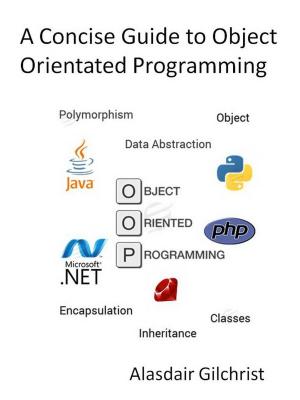Robotics: from Mechanical to Sentient Machines
Thinking Machines, #1
Nonfiction, Science & Nature, Science, Other Sciences, Applied Sciences, Biological Sciences, Biotechnology| Author: | alasdair gilchrist | ISBN: | 9781540158406 |
| Publisher: | alasdair gilchrist | Publication: | July 10, 2017 |
| Imprint: | Language: | English |
| Author: | alasdair gilchrist |
| ISBN: | 9781540158406 |
| Publisher: | alasdair gilchrist |
| Publication: | July 10, 2017 |
| Imprint: | |
| Language: | English |
This book is an introduction to Robotics, it aims to introduce the reader to the world of robots, how they work and how science strives to transform them from simple electro-mechanical contraptions into intelligent thinking machines.
The topics of interest this book covers are as follows:
History of Robotics
The current state of Robotics in 2017
Cyber Physical Systems
The rise of the robot in industry
Components of a Robot
Body types, Mechanisms and Sensors
Mobility, Motion and Precision Control
Automation
Operating Systems and Software
Kinematics & Trajectory Plans
Autonomous and Collaborative Robots
Intelligent Robots
Bio-robots and Cyborgs
Brain Computer Interface
Prosthetics and Exoskeletons
The Robot's future in society and work
This book is an introduction to the engineering science of robotics and as such it sets out to teach the fundamentals of electromechanical robots, starting common actuators, motors, sensors and microcontrollers that we require in designing and constructing simple mechanical robots.
In the opening chapters we will learn about the basic elements of mechanical robots, the components that comprise a typical robot and the diverse body shapes which robot designers can adopt to suit their robot's purpose. We learn about precision control of motors and actuators and the mechanisms such as robotic arms that enable robot's to do tasks. We will learn some of the important aspects of physics that we are required to know if we want to design mobile robots; such as Kinematics which is the physics behind controlling the robots movements with regards 2D or 3D coordinates and how to calculate forward and inverse kinematics. We will also learn some of the fundamentals as well as some tricks to cut out a lot of the heavy math traditionally required in kinematics, motion control, torque, velocity and trajectory planning for both mobile vehicles and robotic arms.
Building upon what we learned we will consider automating mechanical robots, and be introduced to Microcontrollers, common architectures and their use in robotics. We will consider robotic OS & software, and review several options for hobbyists and industrial use cases. We will learn about how robotic OS work, the constraints and what software languages are best suited for robotic projects. We will also learn about Robotic frameworks for design and production of robots using open source software.
Moving along and building on our knowledge we will introduce industrial robots that are designed to collaborate and work safely alongside humans. We will examine why they have come to fill a niche requirement in small medium enterprises. We will also learn how collaborative robots are repurposed and their pros and cons compared to traditional industrial robots.
In the later chapters we will introduce the science behind intelligent robots those with an actual intelligent brain. We will also see how inspiration has come from nature and biology in the quest to produce genuinely intelligent autonomous machines. We will also learn that it has often gone beyond just inspiration by using biological brains to interface with robots.
This leads us on to Cyborgs and the merging of biology with electronics and robotic technology. We will learn about the diverse research projects underway and some of the amazing discoveries and techniques such as Optogenetics, and Brain Computer Interfaces for mind control and other techniques that have been developed to create cyborg technology.
Finally, we will learn about robotic skills in empathy, creativity and developing social skills – the very things that we believed set humans apart. We will also learn how robots are developing human like social intelligence skills which was thought impossible only a few years ago.
This book is an introduction to Robotics, it aims to introduce the reader to the world of robots, how they work and how science strives to transform them from simple electro-mechanical contraptions into intelligent thinking machines.
The topics of interest this book covers are as follows:
History of Robotics
The current state of Robotics in 2017
Cyber Physical Systems
The rise of the robot in industry
Components of a Robot
Body types, Mechanisms and Sensors
Mobility, Motion and Precision Control
Automation
Operating Systems and Software
Kinematics & Trajectory Plans
Autonomous and Collaborative Robots
Intelligent Robots
Bio-robots and Cyborgs
Brain Computer Interface
Prosthetics and Exoskeletons
The Robot's future in society and work
This book is an introduction to the engineering science of robotics and as such it sets out to teach the fundamentals of electromechanical robots, starting common actuators, motors, sensors and microcontrollers that we require in designing and constructing simple mechanical robots.
In the opening chapters we will learn about the basic elements of mechanical robots, the components that comprise a typical robot and the diverse body shapes which robot designers can adopt to suit their robot's purpose. We learn about precision control of motors and actuators and the mechanisms such as robotic arms that enable robot's to do tasks. We will learn some of the important aspects of physics that we are required to know if we want to design mobile robots; such as Kinematics which is the physics behind controlling the robots movements with regards 2D or 3D coordinates and how to calculate forward and inverse kinematics. We will also learn some of the fundamentals as well as some tricks to cut out a lot of the heavy math traditionally required in kinematics, motion control, torque, velocity and trajectory planning for both mobile vehicles and robotic arms.
Building upon what we learned we will consider automating mechanical robots, and be introduced to Microcontrollers, common architectures and their use in robotics. We will consider robotic OS & software, and review several options for hobbyists and industrial use cases. We will learn about how robotic OS work, the constraints and what software languages are best suited for robotic projects. We will also learn about Robotic frameworks for design and production of robots using open source software.
Moving along and building on our knowledge we will introduce industrial robots that are designed to collaborate and work safely alongside humans. We will examine why they have come to fill a niche requirement in small medium enterprises. We will also learn how collaborative robots are repurposed and their pros and cons compared to traditional industrial robots.
In the later chapters we will introduce the science behind intelligent robots those with an actual intelligent brain. We will also see how inspiration has come from nature and biology in the quest to produce genuinely intelligent autonomous machines. We will also learn that it has often gone beyond just inspiration by using biological brains to interface with robots.
This leads us on to Cyborgs and the merging of biology with electronics and robotic technology. We will learn about the diverse research projects underway and some of the amazing discoveries and techniques such as Optogenetics, and Brain Computer Interfaces for mind control and other techniques that have been developed to create cyborg technology.
Finally, we will learn about robotic skills in empathy, creativity and developing social skills – the very things that we believed set humans apart. We will also learn how robots are developing human like social intelligence skills which was thought impossible only a few years ago.















